
As many trainers and teachers already know, people have different learning styles. Howard Gardner has dedicated his life work to this Theory of Multiple Intelligences. Yet, many conference panels are designed to accommodate only one or two styles of learning and go shallow instead of going deep. Would participants learn more and have greater impact if panel designers incorporated different techniques such as visual learning and if they designed for more audience engagement?
After all, how much does one remember after hearing 80 minutes of power point presentations with an expert filling our heads with every detail they know about a topic and leaving only 10 minutes for process with a rapid fire q/a? How much do you retain? How much do you apply? When was the last time you went to a conference and had a deep learning experience through conversation and stimulation of all senses from a traditional panel?

That’s the questions I asked myself as I designed my panel for the NTEN’s annual conference, the NTC. I designed and facilitated one panel, I’ve Found My Free Agent, Now What? This year I not only facilitated a conversation in the room, but integrated visual facilitation techniques to spark insights and capture learnings. Also, the element of fun, more interaction, and opportunities for sharing in smaller groups. Straight presentation kills all learning. This mixture leads to rich learning and documentation.

I always include an opportunity for people in the room to get to know one another as a “share pair.” Some people might think this is a waste of time, but it gives an opportunity for people to share something they learned or know about the topic. I never get to find out what all the pairs discuss, but I was thankful that Lisa Colton shared what learned Twitter. If you are bored with my description of process and hungering for the content, here’s Devon’s “Storify” documentation for the session.
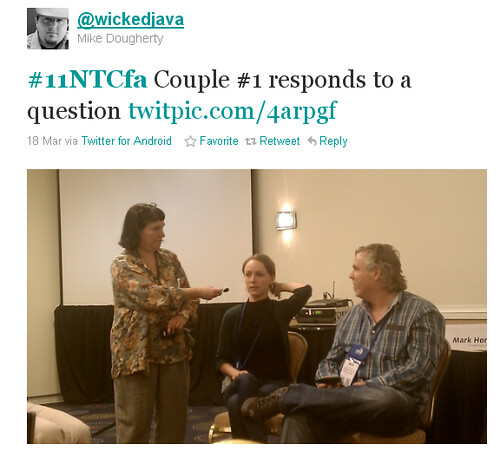
My panel was about how nonprofits can work effectively free agents, individuals interested in social change but not a traditional nonprofit staff person or volunteer. It struck me that it was all about relationships. So, I used the “Newlywed Game” as the metaphor and had the “free agent/nonprofit” couples answer questions like how they met, their first date, and if they ever had a fight.
As an icebreaker, I asked them to write down one word that leads to a fruitful collaboration. These were telling:
Trust — Transparency — Empathy – Enthusiasm
This was followed by each couple talking from the heart about their experience working together or presenting some examples of their work.
Shawn Ahmed showed a powerful video of people in his network who donated to the organizations he was working with because he was brokering the relationship.
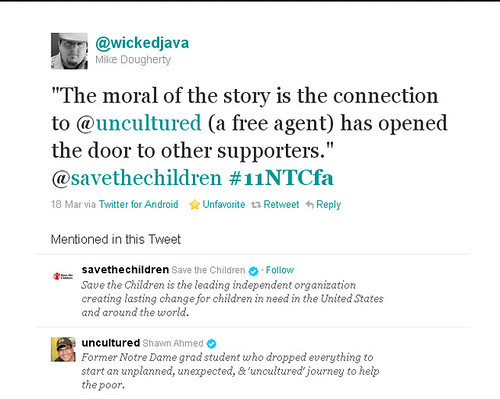
On the organizational side, Ettore from Save the Children made some great points about experiencing empathy so it can help you sell it to senior management who might be resistant to working with Free Agents. He said suggested going out and trying to raise money for your organization as an individual and learn how easy or hard it is.
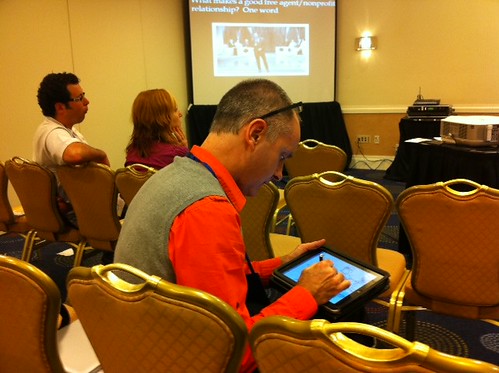
The insights from the panelists were great conversation starters with the everyone in the room. To capture the nuggets, I had two visual recorders – Rob Cottingham – a cartoon blogger – and Jonny Goldstein who was doing graphic recording. Rob produced several cartoons, but I love the one that captures the key to relationship success with Free Agents below.
Later I quizzed him about the tools. He is now using his iPad with Sketch book pro and a stylus – which makes it possible for more immediate posting. I’m inspired to do more electronic doodling myself.
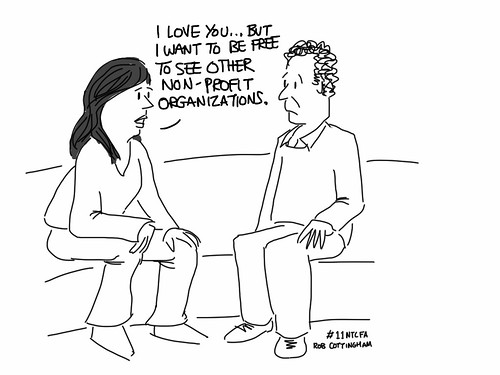
As the discussion was unfolding, Jonny Goldstein was capturing it. As a facilitator, it is great to have this visual so you can focus on the conversational channeling – and have a record you refer to as the conversation weaves and turns.

By the end of the session, Jonny had captured the high level insights in a visual format. Now, of course, I realize that there are also “word smart” people. Laura Lee Dooley captured this blog post about the session, plus you can find my slides all the links and other resources here.
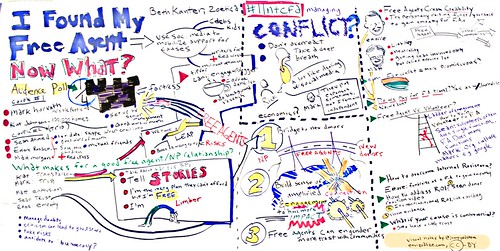
I truly believe that the more engaged the audience the better learning and the better retention. So, when it comes to panels, workshops, or other educational settings – design really matters. You need to engage the whole brain in learning.

And, I discovered that there is a Fortress Nonprofit on Twitter providing great advice about organizational change.
